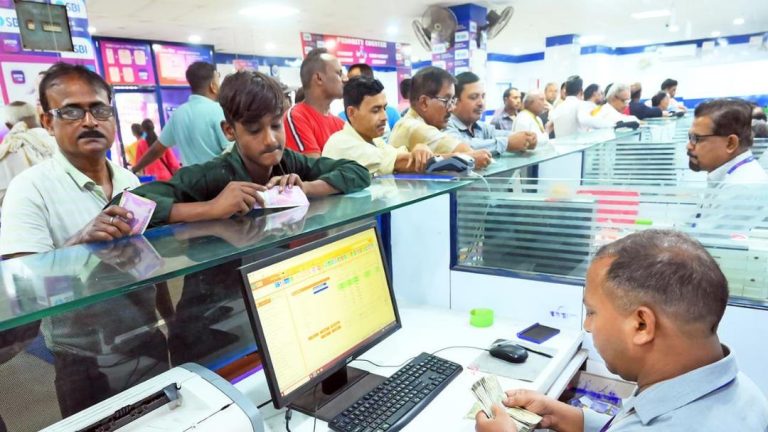
RBI’s Government Securities Holdings Jump to 14.2%: SBI Report
The Reserve Bank of India’s (RBI) share in government securities has witnessed a significant surge, reaching 14.2% in June 2025, up from 11.9% last year, according to a recent report by the State Bank of India (SBI). This increase in the RBI’s holdings is a notable development, as it indicates a shift in the ownership pattern of government securities. The report also highlights that banks have reduced their exposure to government securities, while insurance companies have maintained a stable holding.
The RBI’s increased holdings of government securities can be attributed to its efforts to manage liquidity and stabilize the bond market. With heavy central and state borrowings on the horizon, the RBI’s move to increase its holdings is seen as a strategic step to prevent a sharp rise in bond yields. The bond market has been volatile in recent times, and the RBI’s intervention is expected to provide stability and calm investor nerves.
The reduction in banks’ exposure to government securities is also a significant development. Banks have been reducing their holdings of government securities in recent times, citing concerns over the potential impact of rising bond yields on their profitability. The decline in banks’ holdings has been offset by the RBI’s increased purchases, which has helped to maintain stability in the bond market.
Insurance companies, on the other hand, have maintained a stable holding in government securities. Insurance companies are significant investors in government securities, and their stable holdings have provided a sense of comfort to the market. The stability in insurance holdings is seen as a positive development, as it indicates that these investors remain committed to investing in government securities.
The SBI report also highlights the impact of the RBI’s forex interventions on the bond market. The RBI has been intervening in the forex market to manage the volatility in the rupee, which has resulted in a tightening of liquidity in the system. The reduced liquidity has prompted the RBI to undertake fresh Open Market Operations (OMOs) to inject liquidity into the system. The OMOs are expected to provide relief to the bond market, which has been facing liquidity constraints in recent times.
The surge in the RBI’s government securities holdings has significant implications for the bond market. With heavy borrowings ahead, bond yields may stay rangebound, as the RBI’s increased holdings are expected to provide stability to the market. The stability in bond yields is seen as a positive development, as it will help to reduce the cost of borrowing for the government and corporates.
The SBI report also highlights the challenges facing the bond market in the coming months. The heavy central and state borrowings, combined with the RBI’s forex interventions, are expected to keep the bond market volatile. The market is expected to remain rangebound, with bond yields moving in a narrow range.
In conclusion, the RBI’s increased holdings of government securities is a significant development, which is expected to provide stability to the bond market. The reduction in banks’ exposure and the stability in insurance holdings are also positive developments. The RBI’s forex interventions and OMOs are expected to provide relief to the bond market, which has been facing liquidity constraints. With heavy borrowings ahead, the bond market is expected to remain volatile, but the RBI’s increased holdings are expected to provide a sense of comfort to investors.
As the bond market navigates through these challenging times, it is essential to keep a close eye on the developments in the market. The RBI’s actions, combined with the borrowings by the central and state governments, will play a crucial role in shaping the bond market in the coming months.





